|
John Tyman's Cultures in Context Series Torembi and the Sepik A Study of Village Life in New Guinea |
|
Topic No. 15: School and After ~ Photos 256 - 287 |
|
John Tyman's Cultures in Context Series Torembi and the Sepik A Study of Village Life in New Guinea |
|
Topic No. 15: School and After ~ Photos 256 - 287 |
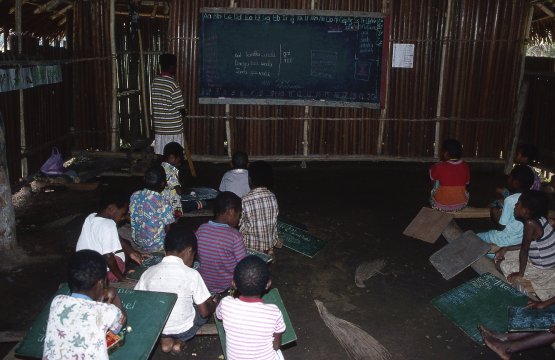 |
| 257. The preschool was built in Torembi 2 by the community. It provides those willing and able to attend with an introduction to basic schooling. |
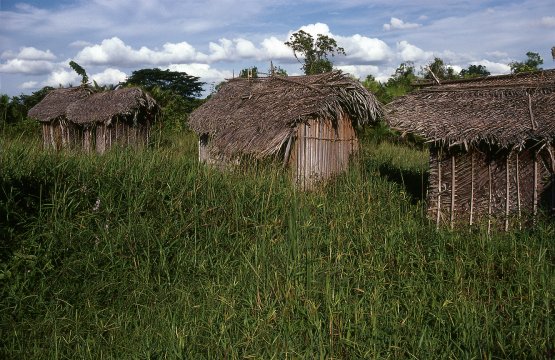 |
| 264. Behind the school there were toilets (but no water to flush them) and a basketball court by the principal’s house. Lessons start at 8.00 am and finish at 3.00 pm. |
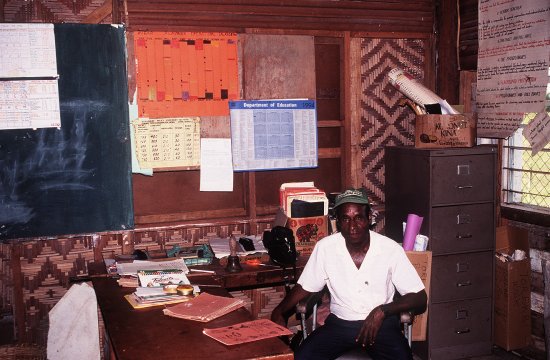 |
| 266. The principal’s office was decorated in much the same way, plus a sign on the door which read: "Headmaster's Office : Enter with Peace and Harmony". |
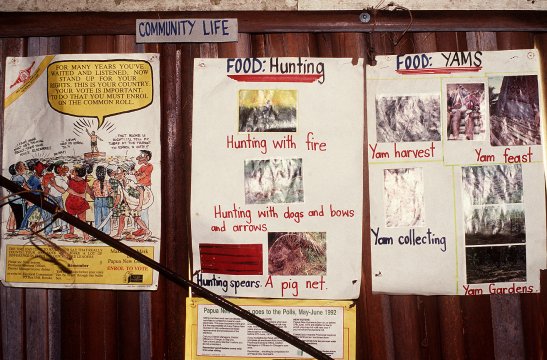 |
| 267. Needless to say the school operates with a minimum of equipment … just a few posters (some provided by the Department of Education, others made locally). |
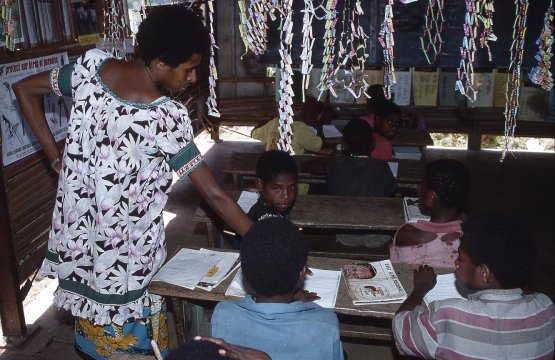 |
| 270. Besides paying the salaries of teachers, the government provides the basic materials distributed to students. |
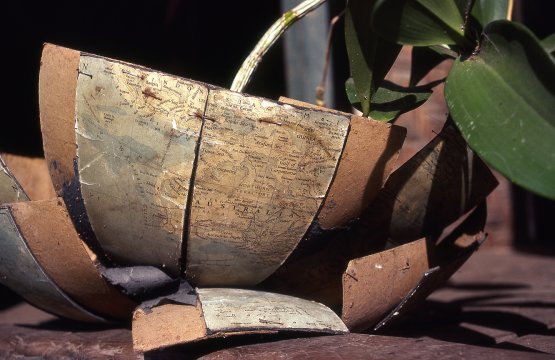 |
| 271. In addition to English, children learn basic maths, and social studies … even if their globe is falling apart. |
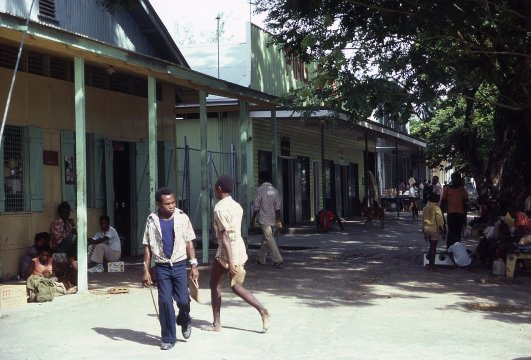 |
| 276. In some parts of New Guinea, though, especially near highways, gangs of young men -- known as ‘rascals’ -- are a major problem today, and a threat to law and order. (Street in Wewak.) |
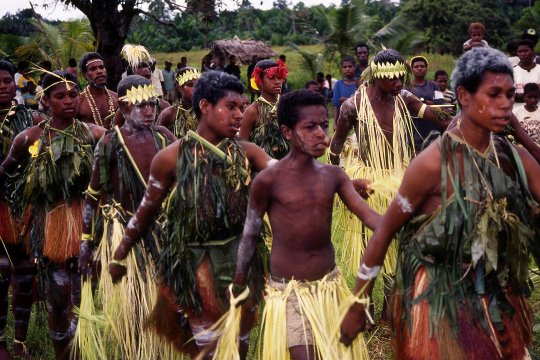 |
| 281. Girls outnumbered boys, but there were teams of boys also, wearing grass skirts over cotton shorts. |
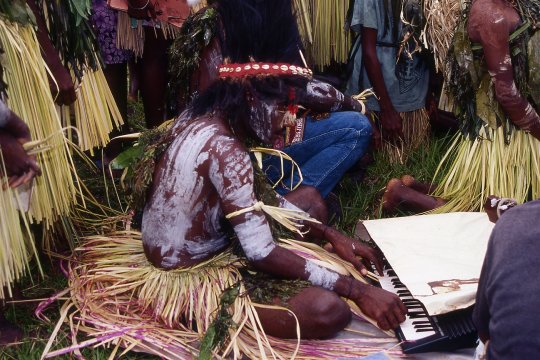 |
| 282. Most groups danced and/or sang to rhythms established by kundu drums, but one school brought along a battery-powered electronic keyboard. |
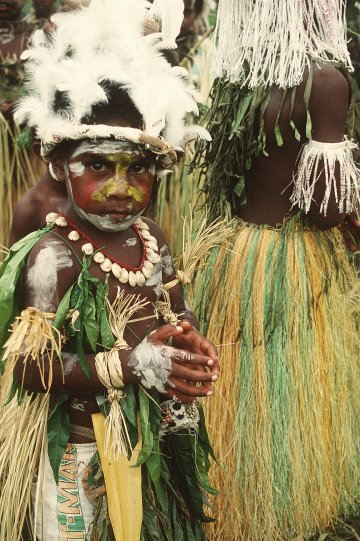 |
| 283. Though most of the dancers were teenagers (having progressed through the grades slowly due to interruptions in their schooling) there were young ones who performed also. |
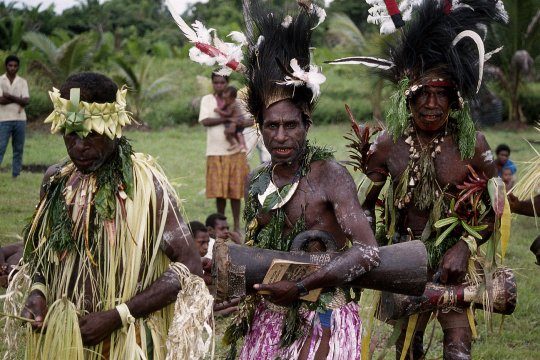 |
| 285. Teachers danced also. The principal of Torembi Public School in the centre is carrying a song book plus my kundu drum. |
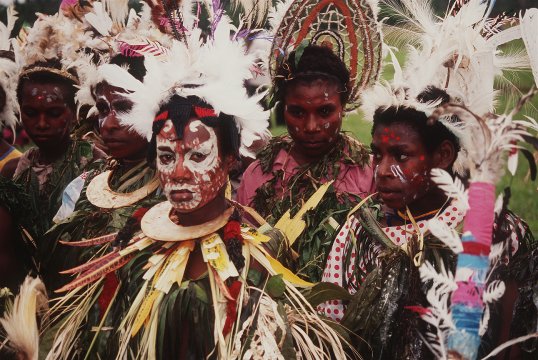 |
| 286. Inevitably there were awards for the best-dressed dancers … |
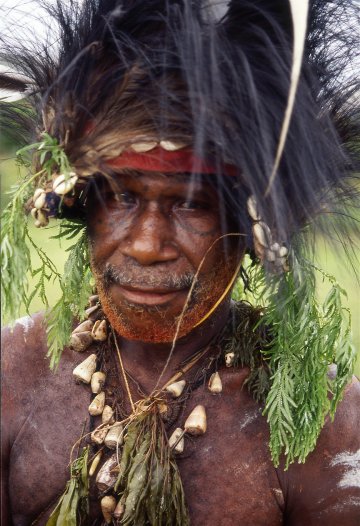 |
| 287. And this included the teachers. (Also see video extracts 36-39) |
![]()

![]()
Back to
Cultures in Context Intro: Photos & Recordings
![]()
Text, photos and recordings
by John Tyman
Intended for Educational Use
Only.
Copyright Pitt Rivers Museum,
Oxford University, 2010.
Contact Dr.
John Tyman for more information regarding licensing.
![]()
Photo processing, Web page layout,
formatting, and complementary research by
William Hillman ~ Brandon, Manitoba
~ Canada
www.hillmanweb.com